- To solve the logistical challenge of filming hummingbirds, researchers have developed a mechanical camera trap trigger system that separates the camera from the sensors that detect an animal’s movement or heat.
- The independent positioning of multiple sensors enables users to detect small, fast-moving animals before they reach the camera and to adapt to immediate surroundings, such as vegetation that can trigger unwanted photos.
- The do-it-yourself nature of the circuit, powered by AA batteries, keeps it low-cost, long-lasting, and easy to recharge for those with some knowledge of wiring and electronics.
When you picture (ahem) a photo taken by a camera trap—a remote camera triggered by movement—you might think first of a tiger or some other stealthy forest cat. Recent Wildtech readers might think of primates or other arboreal mammals. You probably don’t think of hummingbirds.
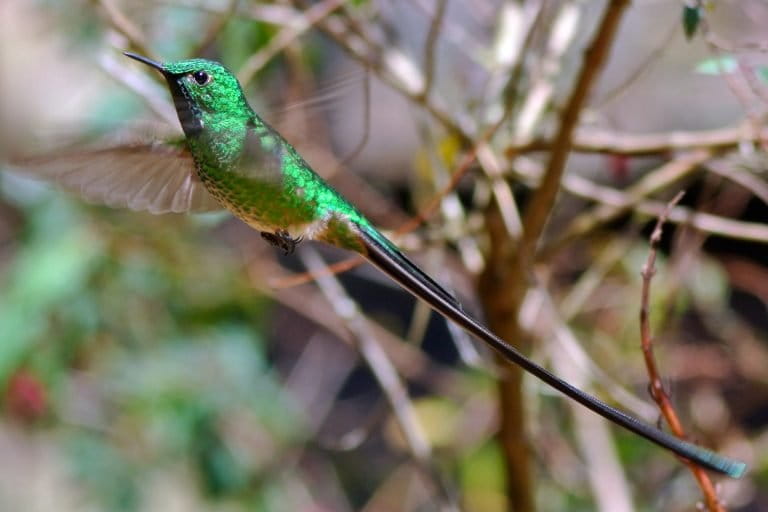
Camera traps typically take a photo when a warm-bodied animal walks in front of cooler vegetation and triggers the system’s passive infrared (PIR) sensor. The sensor detects a change in surface temperature from the surroundings and triggers the device to take a photo or video automatically, with no human interference. Field biologists have thus used camera traps to record the presence and behavior of animals in a variety of situations.
Camera traps have limitations, however, for particular species and behaviors. They do not yet support high-speed video recording. And the time lapse between detection by the sensor and release of the camera’s shutter button is often too long to capture the whole body of a small, fast-moving animal in the photo.
Hummingbirds are the epitome of small, fast-moving animals, flapping their wings roughly 50 times per second, faster than the human eye can see, and moving at 15 meters each second (54 km/h; 34 mph). Measuring 5-22 cm (2-9 in), hummingbirds are often too small and fast to be captured by standard camera traps.
To address the difficulty in photographing hummingbirds automatically, researchers have recently developed a triggering system that physically separates the sensor that detects the target animal from the actual camera.
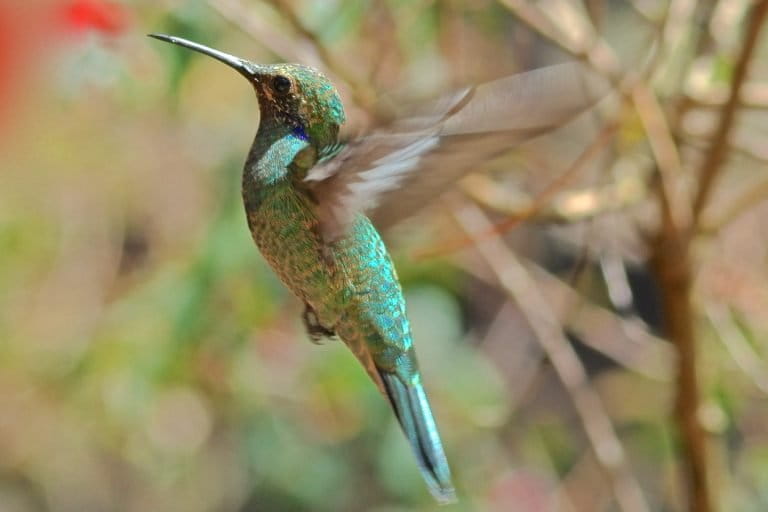
Wing beats made visible
Researchers Alejandro Rico-Guevara and James Mickley, both from the University of Connecticut, were studying the net gain by hummingbirds from feeding on flower nectar. They aimed to compare the energy the birds expended approaching the flower and feeding to what they gained from consuming the nectar.
“Monitoring the drinking and pollination behavior of wild hummingbirds can be truly time and resource consuming,” said Rico-Guevara in an email to Mongabay-Wildtech. “Many researchers record their visits while standing near flowers…some approaches include leaving a camera recording a flower from far away for many hours (which can only be done in normal speed) and identifying when the bird comes later, but neither of these were good enough solutions [for us]. We could not find a commercial camera trap that would collect the information described above, and that struggle gave birth to developing our own approach.”
To make this comparison, the researchers needed to count each bird’s wing beat frequency and feeding rate. Hummingbirds can deplete a flower’s nectar in less than one second. To be able to count the birds’ movements, the scientists had to film them and then slow the footage down enough for a human brain to count wing beats and nectar licks.
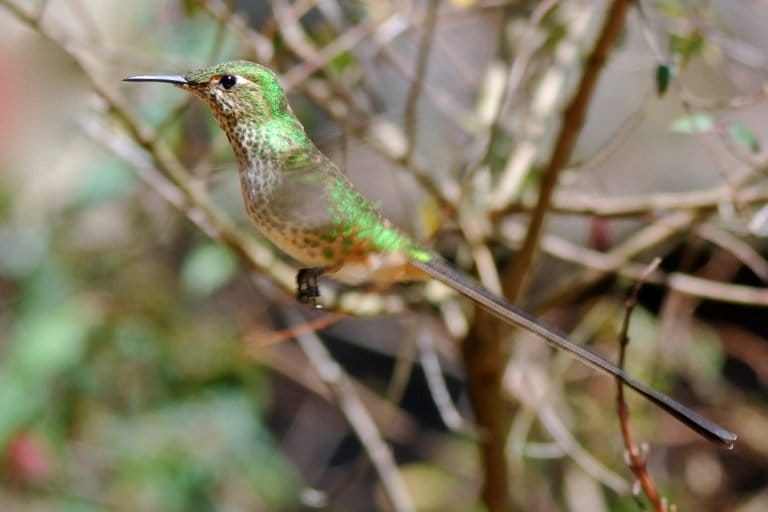
The commercial camera traps they reviewed lacked several features necessary for capturing hummingbird flower visits. Their triggers were too slow (0.5 seconds), their video frame rate was too low (<60 frames/second), or they lacked the necessary remote triggering.
The pair teamed up and collaborated with the University’s Electrical Engineering Department to build a new camera trap triggering system that would be both inexpensive and adaptable.
Their new system uniquely separated each of their four high-speed video cameras from the sensors that triggered them. It also used an array of PIR sensors set around focal flowers in each of four hummingbird territories to trigger the respective camera when hummingbirds approached.
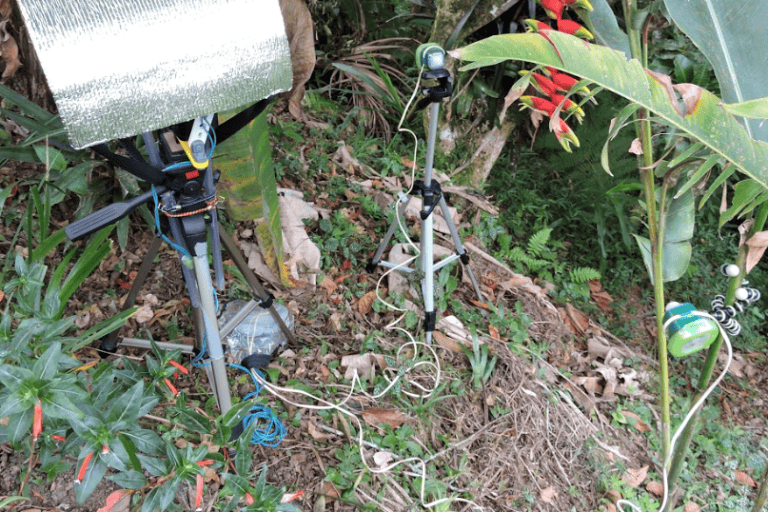
This separation of sensors from camera allowed the photographer to connect and independently position several sensors to a single camera and gave the camera advance warning of a small animal flying in front of it. It also allowed them to pair the sensors with the high-speed video cameras necessary to capture the hummingbirds’ fast movements.
“We were able to pair our triggering mechanism with the perfect camera for our research, and…other researchers could pair with a different camera uniquely suited for their own research,” said Mickley.
They used the videos to measure several factors—including how fast the birds licked the nectar, how deeply they inserted their bills into the flowers, the amount and properties of the nectar collected, and the number of wing beats per second—to determine the energy content of their meal, the calories burned while hovering, and the net energy they gained from feeding.

The researchers found their system to effectively capture the photos they needed for their work.
“We were satisfied with the high temporal and spatial resolution that we achieved,” said Rico-Guevara. “No one had filmed hummingbird visits to wild flowers in slow motion in which you could see the drop of nectar inside and measure how fast they drink it!”
The researchers filmed both the visiting hummingbirds and the new system with a backup camera, to look for false positives, the triggering of a photo by non-target movement, such as vegetation moved by a strong breeze, or missed visits to the target flowers. The ability to re-position the sensors helped the researcher reduce the number of false positives, which was relatively high in the study’s initial testing, to a small proportion of photos.
According to Mickley, “Once calibrated, our trap was great at only triggering when a hummingbird visited, but also not missing any hummingbird visits.”
The backup videos also showed that, despite the use of camouflage, the hummingbirds inspected the cameras and sensors when they first arrived. All the birds went on to visit the flowers, and the minimal sound from the trigger mechanism did not elicit any observable behavioral changes in the hummingbirds.
Do-it-yourself electronics: intricate but straightforward
The electric camera trap circuit converts the low-voltage signal from a standard PIR sensor into a short pulse with a voltage and amperage high enough to operate a car door lock actuator that automatically presses the camera’s shutter button and takes the photo.

Above, the video camera with the actuator above to press the shutter button. It attaches using adjustable, off-the-shelf articulating arms and clamps. Photo credit: Rico-Guevara and Mickley (2017) At right, the two PIR sensor units they are light enough to attach to a low-cost “gorilla pod” (above) that wraps around a branch or stem or to a standard tripod mounting plate. Photo credit: Rico-Guevara and Mickley (2017) |
  |
Anticipating that this do-it-yourself setup requires a fair knowledge of electrical wiring, the researchers include in their publication, “Bring your own camera to the trap: An inexpensive, versatile, and portable triggering system tested on wild hummingbirds,” a series of detailed plans and drawings of the system for other researchers and photographers to build their own. Ideally, with some help.
“The collaboration with the engineering department was important in the design and development of the system,” explained Rico-Guevara, “but in its final version I believe that with the information that James [Mickley] provided [in the publication], it would be straightforward to replicate.”
Mickley added, “Alejandro and I as ecologists did the bulk of the building of this system. Major modifications might require more of a learning curve and some electrical experience, but as currently built, it is not difficult to reproduce without much knowledge of electronics.”
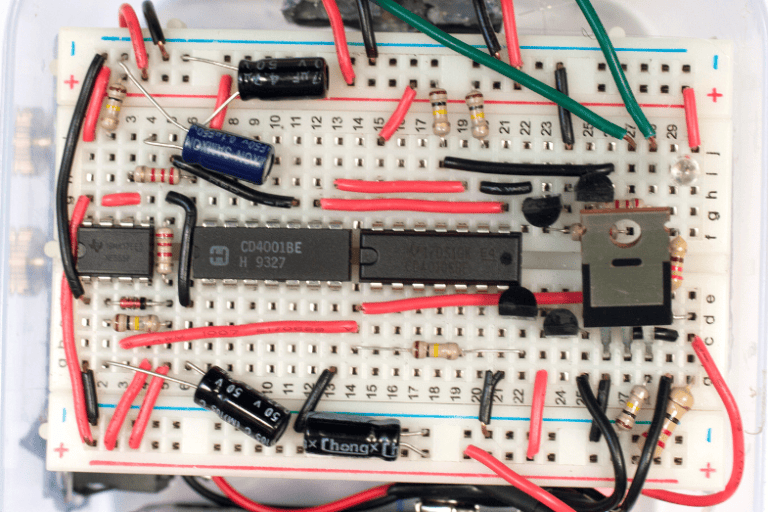
The circuit basically combines sensors with a mechanism to press the camera’s shutter button. The researchers explain that the mechanical nature of the system allows it to pair nearly any camera on the market, including those with no remote triggering, to nearly any available sensor. Researchers can thus use models they already own or switch models as needed, and they can incorporate sensors that detect light, heat, or color, as well as motion.
Mickley explained, “Most camera traps… have fewer features and lower quality than a cheap point-and-shoot digital camera. Better cameras would make these traps prohibitively expensive…I don’t think there is an easy way around this tradeoff, and that’s why our system is so appealing: you can use it with a camera you already own with the requisite features, or buy cheap used cameras.”
The do-it-yourself nature of the circuit, powered by standard AA batteries keeps it relatively low-cost, long-lasting, and easy to recharge. “While doing conservation research…it is vital to obtain not only the right information, but also to do it in the most cost-efficient way,” emphasized Rico-Guevara.
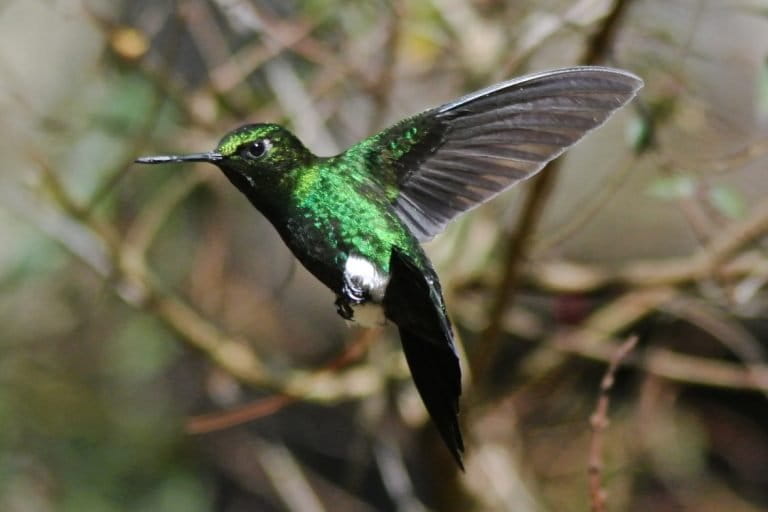
Rico-Guevara has used these traps “under pretty hot and arid conditions, and they have worked without problem.” “Currently,” he added, “a student of mine is using it to collect data on high-altitude hummingbirds in paramo habitats.”
The high-speed video cameras needed to film hummingbirds in this study were not waterproof and required coverings and regular maintenance, but, the authors said, researchers that need to film for longer periods could use waterproof cameras that can remain in standby mode for weeks at a time.
The authors state in their paper, “While designed for hummingbirds, our application can be extended to any system where specialized camera or sensor features are required, or commercial camera traps are cost-prohibitive, allowing camera trap use in more research avenues and by more researchers.”
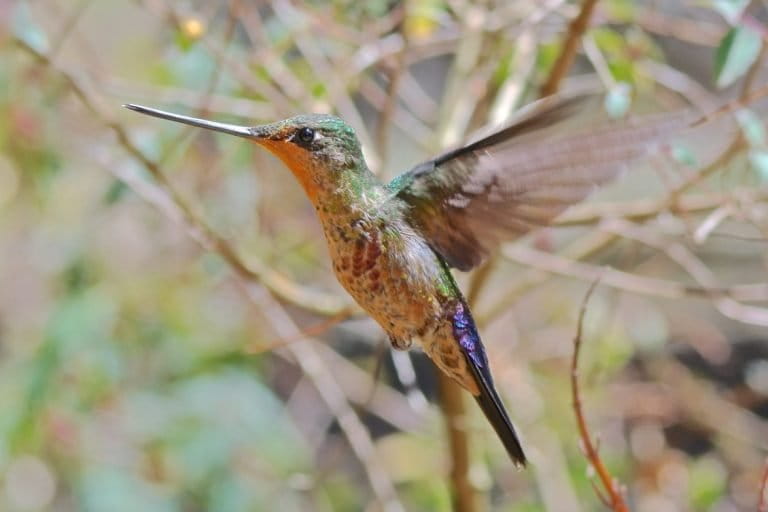
Reference
Rico‐Guevara, A., & Mickley, J. (2017). Bring your own camera to the trap: An inexpensive, versatile, and portable triggering system tested on wild hummingbirds. Ecology and Evolution, 7, 4592–4598. https://doi.org/10.1002/ece3.3040